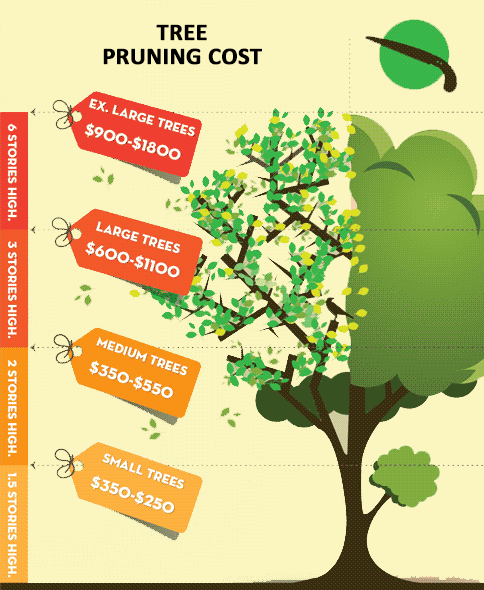When it pertains to developing a landscape that prospers, mastering the art of tree trimming is a must. Think of being able to form your trees with accuracy, ensuring their vigor and beauty for years ahead. By finding out the necessary methods for appropriate cuts, timing, and structural training, you hold the trick to a successful exterior area that will certainly excite all that experience it. However how do these pruning techniques absolutely impact the health of your trees and the total landscape visual?
Proper Trimming Cuts for Tree Health
When it concerns maintaining the health of your trees, making proper trimming cuts is essential. Wrong cuts can result in disease, insect problem, and total tree decline. To make certain the vitality of your trees, constantly start by utilizing sharp, clean devices to make accurate cuts.
Begin by identifying the branch collar, a swollen area where the branch affixes to the trunk. Reducing simply outside the collar assists advertise appropriate healing and decreases the danger of infection. Prevent leaving stubs as they can welcome insects and conditions right into the tree.
Remember to make cuts at a small angle, sloping away from the trunk, to avoid water from merging on the wound. In addition, get rid of any kind of dead, harmed, or going across branches to enhance air flow and sunlight infiltration.
Timing and Regularity of Trimming
To preserve the health and wellness and framework of your trees, comprehending the ideal timing and frequency of trimming is crucial.
The best time to prune trees is typically during the inactive period in late winter or very early springtime. Trimming during arborist throw line advertise new growth once the tree begins budding in the springtime.
However, some trees, like spring-flowering ones, are best pruned right after they end up flowering to stay clear of cutting off next year's flower buds.
Regular pruning is essential, but the regularity depends on the tree species and its growth rate. For many trees, a yearly examination to remove dead, infected, or going across branches is advised. Youthful trees might require even more regular trimming to develop a solid framework, while mature trees may only need upkeep pruning every couple of years.
Stay clear of trimming throughout the fall when illness are a lot more conveniently spread out, and refrain from heavy trimming throughout the summer season when the tree is actively expanding.
Training Young Trees for Framework
For developing strong and healthy trees, training young trees for optimum framework is important. By shaping a tree when it's young, you set the foundation for a strong and aesthetically appealing fully grown tree.
Begin by recognizing the main leader, which is the primary upward-growing branch. Encourage the central leader's growth by pruning away competing leaders, helping the tree establish a solid main trunk. In addition, remove any type of branches that expand internal or downward, as they can cause structural issues as the tree grows.
It is very important to area out side branches uniformly around the trunk to promote balanced development. As the tree grows, remain to monitor its development and trim as needed to keep its shape and structure.
Properly educated young trees are less likely to establish weak crotches or chock-full branches, lowering the risk of damage throughout storms. Spending time in training young trees will certainly repay with a magnificently structured and durable tree in the future.
Conclusion
Since you have mastered the necessary methods of tree pruning, your landscape is on its method to thriving. By using arborist climbing knots , making precise cuts, and appropriately timing your trimming sessions, you are guaranteeing the health and wellness and durability of your trees. Keep in mind to routinely evaluate and preserve your trees to keep them prospering. With your newfound understanding, your landscape will remain to expand wonderfully for several years ahead. Maintain the great work!
